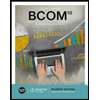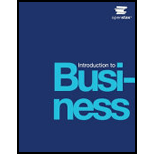
Concept explainers
As the controller of a financial company, take pride in the and internal
The passage of the Sarbanes-Oxley Act, with its emphasis on testing internal control systems, initiated several changes. You have studied the law and made adjustments to ensure you comply with the regulations, even though it has created additional work. Your auditors, however, have chosen to interpret SOX very aggressively—too much so, in your opinion. The auditors have recommended that you make costly improvements to your systems and also enlarged the scope of the
Using a web search tool, locate articles about this topic and then write the responses to the following questions.Be sure to support your arguments and cite your sources.
Ethical Dilemma: Should you change auditors because your current one is too stringent in applying theSarbanes-Oxley Act? What other steps could you take to this situation?
Sources: Loren Kasuske, "The 4 Biggest Pros and Cons of the Sarbanes-Oxley Act,https://ktconnections.com, June 8, 2017; Terry Sheridan, "Financial Services Spend More than $1M Annually on SOX,"https://www.accountingweb.com, August 2, 2016; "Sarbanes-Oxley Is Paying Off for Companies Despite Increased Costs and Hours. Protiviti Survey Finds."http://www.pmewswirexom, June 2, 2016; Daniel Kim. "Top 3 Ways to Reduce SOX Compliance Costs," https://www.soxhub.com, December 14, 2015.
To determine:
Whether the auditors should be changed because the current one is too stringent in applying the Sarbanes-Oxley Act, and what other steps could be taken to resolving this situation.
Introduction:
The Sarbanes-Oxley Act (SOX) was passed by the US Congress in 2002, in terms to protecting investors from fraudulent financial reporting by corporations such as auditors, accountants and corporate officers.
Explanation of Solution
By not complying with the SOX Act, the company may face larger issues in the future with the mistrust of investors and eventually losing them, which would affect the capital intake and stock market value of the firm.
Therefore, it would be more relevant for the medium-sized financial services company to take in the input of the auditors and make more relevant changes in accordance to the relevance to the act because if not; there can be risks which would have to be taken. Believing that the company follows the passage of the SOX Act, it would not suffice that all the sections of the Act are followed. Thereby, suggesting keeping the auditors, and rather renovate the company's operational facilities.
In accordance to resolve the issue, first the Board of Directors or the top management would have to be briefed about the whole SOX Act and should be notified of the risks and losses which would have to be faced with not fully complying with the Act, and how it can affect their shareholdings as a result.
Then full review of the company's books in-house should be done to understand the points in which they are not completely following the Act.
And last, subsistent changes to the company should be made and new contingent plans should be made following the course of the Act. This would allow them to relive the streak of continuous compliments by their auditors on their procedures.
Want to see more full solutions like this?
Chapter 14 Solutions
Introduction to Business
Additional Business Textbook Solutions
Principles of Management
Principles of Accounting Volume 2
Horngren's Accounting (12th Edition)
Horngren's Cost Accounting: A Managerial Emphasis (16th Edition)
Managerial Accounting (4th Edition)
Principles of Accounting Volume 1
- When performing an integrated audit of a public company, what arethe auditor’s responsibilities related to internal control as required by PCAOB standards?arrow_forwardPlease solve all questions. You are the manager responsible for the audit of Kicap Manis Berhad, a listed company, for the year ended 31 December 2019. The main business activity of Kicap Manis Berhad is the manufacture of farm machinery. The audit work has been completed, and you are reviewing the working papers in order to draft a report to those charged with governance. During the audit of property, plant and equipment (PPE), the audit team found no material misstatement but the following issues have come to your attention. It was discovered that authorization had not been gained for the purchase of office equipment with a cost of RM315,000. The officer in charge of the purchase claimed that the management has conveyed their agreement with the purchase in the management team monthly meeting, but the audit team has not been furnished with such minutes of meeting even after numerous requests. The client is using an internally developed PPE system, PropertyCare, to maintain the records…arrow_forwardRegistered external auditors must have the knowledge and skills to perform their function and should be honest. There are also a number of other attributes or fundamental principles of ethical behavior, which all auditors should have and these are identified in professional external auditing standards issued by IRBA as follows:· integrity· objectivity· professional competence and due care· confidentiality· professional behaviorThe following actions taken by registered external auditors are example of non-compliance with one or more principles listed above; Question 2 Because the budget for the audit of Afrimat Ltd would be exceeded and because he felt that, he had acompetent audit team, A Smith the registered auditor in charge of the audit decided not to spend thenecessary time on reviewing the work papers of the audit team.arrow_forward
- 7 In June 2005, IESBA issued a revised Code of Ethics for Professional Accountants. What does the term IESBA stands for? a. Internal Ethics Standards Board for Auditor b. Institutional Ethics Standards Board for Auditor c. Integrity and Ethics Standards Board for Accountants d. International Ethics Standards Board for Accountants Clear my choicearrow_forwardWithin the context of strong corporate governance, what is the board's role in dealing with the Audit Committee and internal audit?arrow_forwardManagement in today’s corporate world has developed a habit of acting on their own interest rather than maximizing the interest or wealth of the shareholders. This has made the need for Independent Audit greater in Today’s Society than it was in 50 years ago. Mr. Ama Yaw, an investor, in his opinion sees “Auditor as an Insurer or a Guarantor of the correctness of the financial statements” because they rely only on audited Financial Statements in making investment decisions. Required: Comment on the Opinion of Mr. Ama Yawarrow_forward
- Registered external auditors must have the knowledge and skills to perform their function and should be honest. There are also a number of other attributes or fundamental principles of ethical behavior, which all auditors should have and these are identified in professional external auditing standards issued by IRBA as follows:· integrity· objectivity· professional competence and due care· confidentiality· professional behaviorThe following actions taken by registered external auditors are example of non-compliance with one or more principles listed above; Question 7 7.1 Briefly explain each of the principles of ethical behavior listed above.7.2 Identify, with a brief explanation which of the fundamental principles have not been complied with in eachof the situations above.(Each situation may amount to non-compliance with more than one principle)7.3 Discuss the similarities and differences, if any, between the code of ethics for external auditors (IRBA) andthe code of ethics for…arrow_forwardThe Securities and Exchange Commission in the U.S.A. charged Ernst & Young LLP (EY) for cheating by its audit professionals and fined the organization a $100 million penalty. Identify the ethical aspects of this episode, analyze the likely factors that led to this occurrence, and examine the remedial measures that the organization needs to take to prevent this from happening again.arrow_forwardWhat services might the internal audit function provide in lieu of performing an assurance engagement?arrow_forward
- Consider the following statement: “The public's perception of corporate ethics changed dramatically with the revelation of the unethical decision-making at Enron, WorldCom, Adelphia, Tyco International, Peregrine Systems and iVillage. The scandals took a toll on consumers' confidence and portfolios, and undermined their faith in the accounting profession. Corporate stakeholders have called for more transparent financial reporting and evidence of better ethical conduct”. Required: Describe and explain THREE (3) broad categories of fraud schemes that may arise base on the situation above. Give one example for each category.arrow_forwardDiscuss the auditor’s responsibility to communicate fraud to the audit committee. When is the auditor required to communicate possible fraud to parties other than the audit committee and management?arrow_forwardRegistered external auditors must have the knowledge and skills to perform their function and should be honest. There are also a number of other attributes or fundamental principles of ethical behavior, which all auditors should have and these are identified in professional external auditing standards issued by IRBA as follows:· integrity· objectivity· professional competence and due care· confidentiality· professional behaviorThe following actions taken by registered external auditors are example of non-compliance with one or more principles listed above; Question 5 Scott Temple, the registered auditor in charge of the audit of Crookes Brothers Ltd, failed to identify themisapplication by the client of an important accounting policy. The misapplication resulted in a materialoverstatement of the company’s profit.arrow_forward
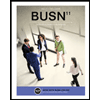 BUSN 11 Introduction to Business Student EditionBusinessISBN:9781337407137Author:KellyPublisher:Cengage Learning
BUSN 11 Introduction to Business Student EditionBusinessISBN:9781337407137Author:KellyPublisher:Cengage Learning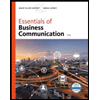 Essentials of Business Communication (MindTap Cou...BusinessISBN:9781337386494Author:Mary Ellen Guffey, Dana LoewyPublisher:Cengage Learning
Essentials of Business Communication (MindTap Cou...BusinessISBN:9781337386494Author:Mary Ellen Guffey, Dana LoewyPublisher:Cengage Learning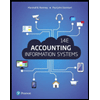 Accounting Information Systems (14th Edition)BusinessISBN:9780134474021Author:Marshall B. Romney, Paul J. SteinbartPublisher:PEARSON
Accounting Information Systems (14th Edition)BusinessISBN:9780134474021Author:Marshall B. Romney, Paul J. SteinbartPublisher:PEARSON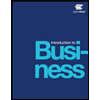
 International Business: Competing in the Global M...BusinessISBN:9781259929441Author:Charles W. L. Hill Dr, G. Tomas M. HultPublisher:McGraw-Hill Education
International Business: Competing in the Global M...BusinessISBN:9781259929441Author:Charles W. L. Hill Dr, G. Tomas M. HultPublisher:McGraw-Hill Education